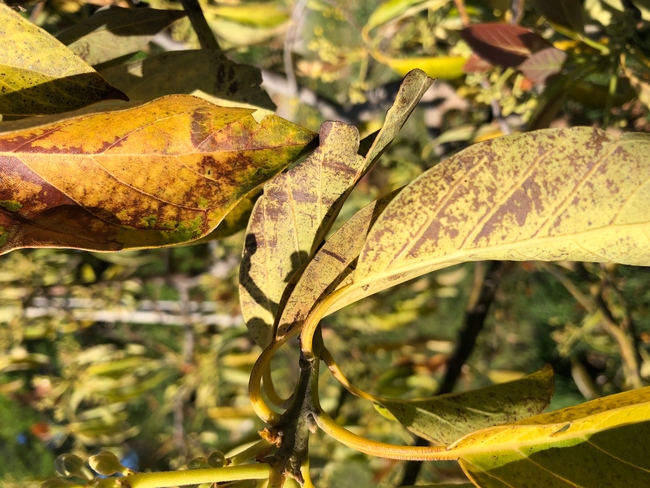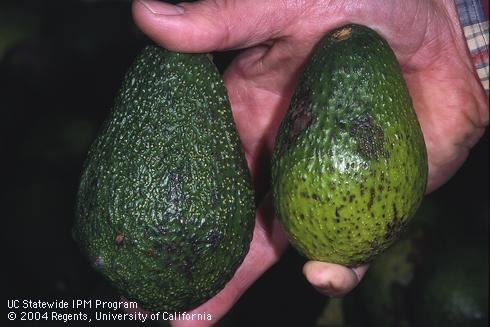So rain is great………as long as it doesn't cause problems like increased iron chlorosis, root rot, snails, erosion, too many weeds, etc., etc., etc, And now we are seeing more anthracnose. This disease is not normally much of a problem in dry California. Colletotrichum gloeosporioides, the causal fungus of the disease, is widespread in avocado and citrus groves. We see it frequently on small stems and branches, but It is normally of little importance on fruit because unusually large numbers of spores are required to produce damaging infections.
Disease on stems
Disease on leaves
Low humidity and no rain during much of the growing season limit disease development in California. With extended foggy or rainy conditions and mild winter temperatures, and where many dead leaves and twigs and mummified fruit accumulate in trees, the fungus can produce enough spores to cause a disease problem. Spores spread in splashing water and can cause infection anytime from fruit set to harvest. Once infected fruit starts to ripen, temperatures of 75°F and above will accelerate anthracnose development, while temperatures below 59°F retard disease development.
Disease on fruit - black speckles
Fuerte, Rincon, and Wurtz scion cultivars are more susceptible to anthracnose than Hass. Healthy trees often recover from foliar infections and defoliation once conditions become dry. Anthracnose becomes a postharvest problem after the grove has been excessively wet for extended periods. Poor growing practices and mishandling of fruit during or after harvest greatly increase the potential for significant fruit loss.
Anthracnose is controlled primarily with good cultural practices in the grove and proper preharvest and postharvest fruit handling.
- Prune out dead limbs and twigs where fungi sporulate. If many dead leaves are entwined in the canopy, knock them out of the tree.
- Prune low limbs to at least a foot off the ground to reduce humidity within canopies by improving air circulation.
- Prune and harvest only during dry conditions and minimize fruit contamination and injury.
More at UC IPM
https://ipm.ucanr.edu/agriculture/avocado/anthracnose/#gsc.tab=0
We do like the rain, so keep it up.


